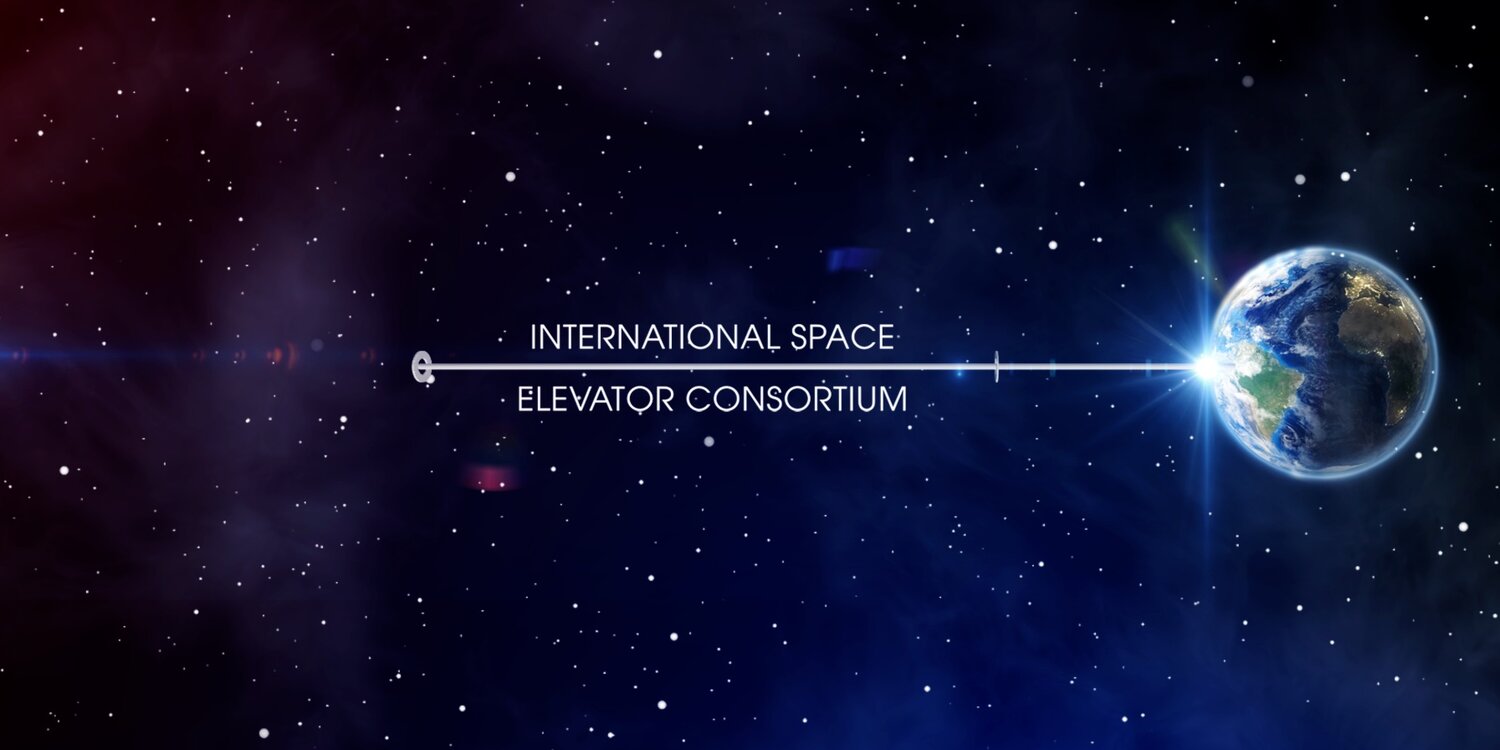Join us at BIS HQ or online for our first in-person and hybrid virtual Evening Lecture since Covid restrictions began. Peter Swan and Jerry Eddy from the International Space Elevator Consortium will talk about advances that are enabling the engineering behind space elevators to become a reality:
The term “A Modern Day Space Elevator – 2021” has surfaced as we have matured through the eight Space Elevator architectures described by David Raitt in his Quest Magazine article (2021). As the name implies, the Modern Day Space Elevator has evolved from a dream to a scientific reality as we can move into the second phase of development (Engineering Development). This change in maturity occurred as the limiting factor of the past has been overcome. The latest information on tether material is that Single Crystal Graphene (new material with 2D characteristics) has been shown to be strong enough and can be manufactured long enough. Mr. Adrian Nixon (on our Board and a major player in the development of 2D materials) believes the material will “be ready in time for Space Elevator development.” Along with the 12 ISEC study reports, 2 IAA reports and a Obayashi report, the baseline for the development of Space Elevators can be defined with processes outlined in how to proceed into this mega-project. The four major thrusts for the present Modern Day Space Elevator focus on the following statements:
- Space Elevators are ready to enter Engineering Development
- Space Elevators are the Green Road to Space
- Space Elevators can join advanced rockets inside a Dual Space Access Architecture Strategy
- Space Elevator’s major strength as a permanent transportation infrastructure is movement of massive cargo to GEO and beyond.
Speakers
 Peter A. Swan, Ph.D., is President of the International Space Elevator Consortium. As such, he leads a team who furthered the concept with incremental studies and yearly conferences. Over the last 18 years he has published many books on the topic as author, co-author, and/or co-editor. He is a full Academician of the International Academy of Astronautics and contributes often to their Cosmic Studies. He is also a partner in Galactic Harbour Associates, a small start-up focusing on Space Elevator Development. He teaches for Osher Lifelong Living Institute (ASU) in the area of Moving Off-Planet and Living in Space. He graduated from the US Military Academy in 1968 and served 20 years in the Air Force with a variety of research and development positions in the space arena. During his career he conducted research, tracked satellites, developed satellite systems, and taught at the AF Academy. Upon retirement in 1988, he joined Motorola on the Iridium satellite program. He lead the team responsible for the development of the Iridium spacecraft bus. In 1998, he helped develop Teaching Science and Technology, Inc. a company that teaches space systems engineering. He is a Fellow of both the American Institute of Aeronautics and Astronautics and the British Interplanetary Society. Pete received his Ph.D. from the University of California at Los Angeles in Mechanical Engineering with a specialty in space systems.
Peter A. Swan, Ph.D., is President of the International Space Elevator Consortium. As such, he leads a team who furthered the concept with incremental studies and yearly conferences. Over the last 18 years he has published many books on the topic as author, co-author, and/or co-editor. He is a full Academician of the International Academy of Astronautics and contributes often to their Cosmic Studies. He is also a partner in Galactic Harbour Associates, a small start-up focusing on Space Elevator Development. He teaches for Osher Lifelong Living Institute (ASU) in the area of Moving Off-Planet and Living in Space. He graduated from the US Military Academy in 1968 and served 20 years in the Air Force with a variety of research and development positions in the space arena. During his career he conducted research, tracked satellites, developed satellite systems, and taught at the AF Academy. Upon retirement in 1988, he joined Motorola on the Iridium satellite program. He lead the team responsible for the development of the Iridium spacecraft bus. In 1998, he helped develop Teaching Science and Technology, Inc. a company that teaches space systems engineering. He is a Fellow of both the American Institute of Aeronautics and Astronautics and the British Interplanetary Society. Pete received his Ph.D. from the University of California at Los Angeles in Mechanical Engineering with a specialty in space systems.
 Jerry K. Eddy, Ph.D., is Secretary of the International Space Elevator Consortium. As such, he ensures the leadership team works together to further the concept with incremental studies and yearly conferences. Over the last 42 years, he has been a leader at several academic institutions, such as Professor of Physics (Indiana Univ of Pennsylvania), Science Department Chair of The Stoney Brook School, New York, and Assistant Professor of Mathematics at Augsburg College, Minneapolis. Over the last two years he has been the editor of the latest ISEC study report entitled: Space Elevators are the Green Road to Space. This has led to papers and presentations on that topic. His Ph.D. was from West Virginia University, completed in 1967.
Jerry K. Eddy, Ph.D., is Secretary of the International Space Elevator Consortium. As such, he ensures the leadership team works together to further the concept with incremental studies and yearly conferences. Over the last 42 years, he has been a leader at several academic institutions, such as Professor of Physics (Indiana Univ of Pennsylvania), Science Department Chair of The Stoney Brook School, New York, and Assistant Professor of Mathematics at Augsburg College, Minneapolis. Over the last two years he has been the editor of the latest ISEC study report entitled: Space Elevators are the Green Road to Space. This has led to papers and presentations on that topic. His Ph.D. was from West Virginia University, completed in 1967.






